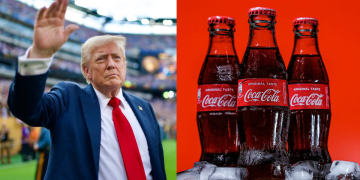Whenever we were shown pictures of Jesus as kids, it’s very likely that He looked more or less the same for each of us. Whether we saw these images at home, in church, or any place else, they either depicted Him as a baby or as a man with long, flowing hair and a pretty impressive beard.
Either way, they depicted Him as white. However, the more familiar we become with the time and place in which Jesus was born, the less likely it seems that He actually looked the way He’s often depicted. His popularly shown facial features weren’t exactly typical in what was then known as Judea.
Nonetheless, He’s been depicted in more or less the same now-familiar way for hundreds of years. And while the prevailing attitudes and influences over those centuries that kept things that way are probably worth studying on their own, we first need to explore where people got that idea in the first place.
For decades after Jesus had died, no images bearing His likeness existed and there were a couple of likely reasons for that.

To understand them, we must go back to about 64 AD, when the emperor of Rome at the time, Nero, faced immense backlash for his response to a great fire that ravaged the city at the time.
As PBS reported , he addressed this criticism as many leaders would go on to do since his reign: He diverted everyone’s attention to a scapegoat. In this case, it was the early Christians.
At the time, a common Roman belief was that Christians practiced cannibalism and incest, so they were treated with suspicion.

The first of those accusations was based on a misunderstanding of the Eucharist, while the second apparently distorted the meaning of other rituals. It is likely through such attitudes that one of the first depictions of Jesus showed Him as having the head of a donkey.
As for why there weren’t any positive depictions of Him by that point, part of it has to do with the fact that early Christians weren’t interested in making images of Jesus because it seemed like idolatry at the time.
And even if someone was inspired to do that, PBS reported that they would’ve faced torture and execution under Nero for doing so openly and other (albeit less severe) punishments from future emperors.
This would change by the time of Emperor Constantine, as he would end up converting to Christianity, which led to it becoming his empire’s offical religion in 323.

As the BBC reported , this Byzantine adoption of Christianity would give way to art depicting Him, though these depictions weren’t preoccupied with showing him accurately.
Instead, images like this mosaic in Rome’s Santa Pudenziana church were based on the emperor at the time. So it’s not entirely inaccurate to say that Jesus is now commonly depicted as a white man with long hair and a large beard because that was how one would describe this emperor.
That said, to attribute our entire conception of Jesus to this emperor is to oversimplify things a bit.

After all, the Syriac Rabbula Gospel of the sixth century depicted Jesus with slightly darker skin and shorter, curlier hair that’s likely a little closer to how he actually looked.
However, the image that the emperor Justinian II would end up putting on the declining Byzantine Empire’s gold coins was closer to the Santa Pudenziana depiction of Him, which likely confirmed that likeness in the minds of the population at the time.
And so, we don’t really know what Jesus actually looked like because those who could possibly depict Him accurately had several reasons not to do so at the time.

And those who had influence over Jesus’ likeness later weren’t terribly interested in this accuracy. As the BBC reported , it wasn’t until 2001 that a concerted effort by forensic anthropologist Richard Neave gave way to an even remotely realistic idea of what Jesus could have actually looked like.
Even then, he’s not claiming that this is necessarily the face of Jesus, but rather a possible model based on the skull of a Galilean man who lived at roughly the same time as Jesus.


















































